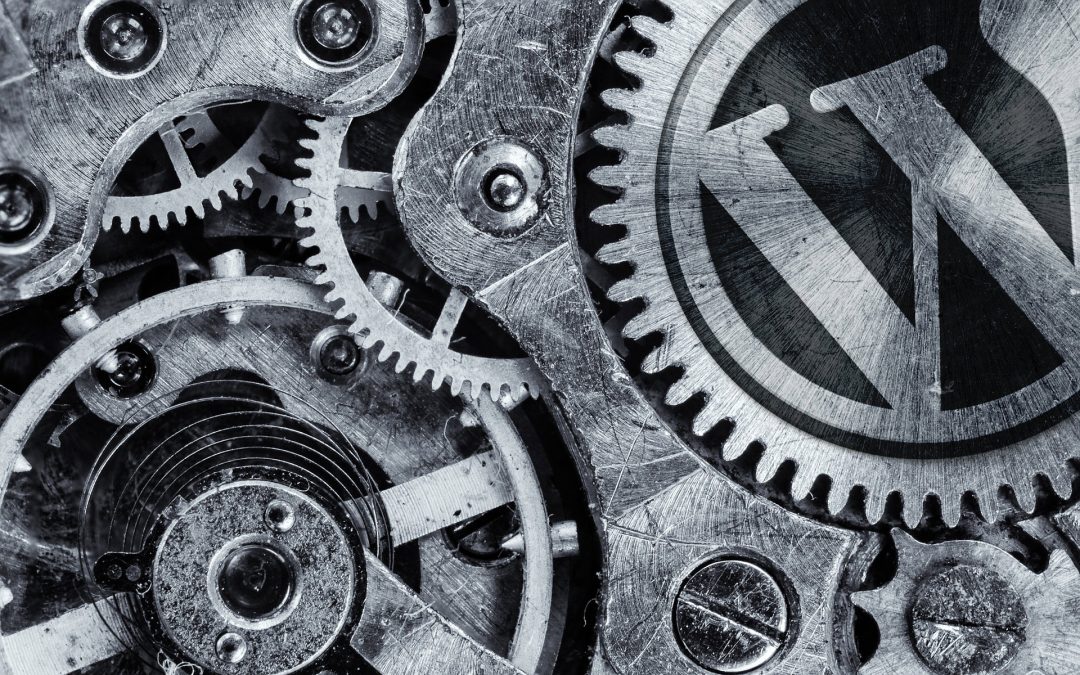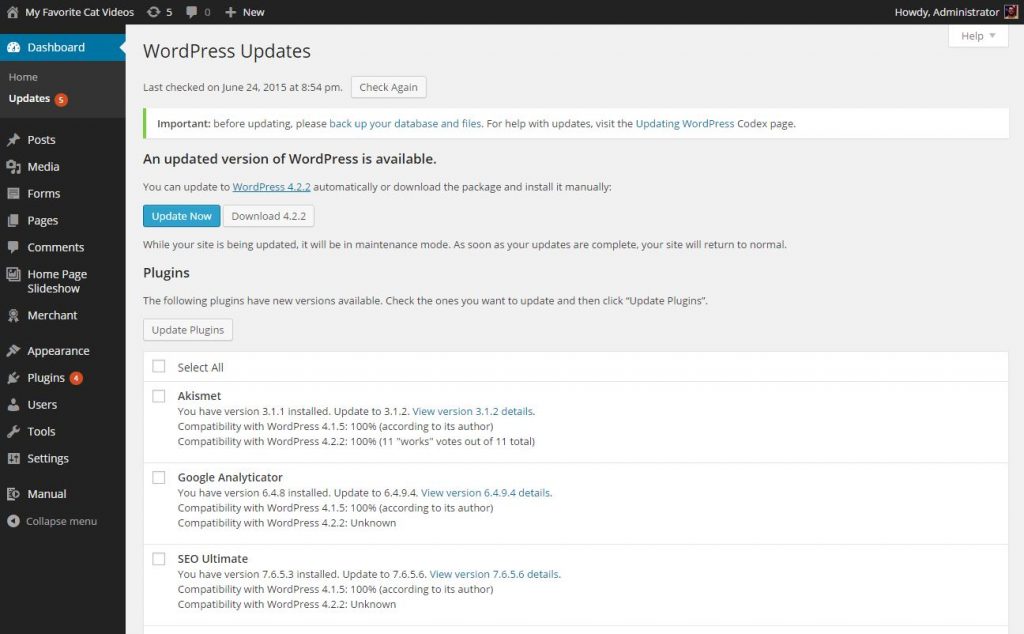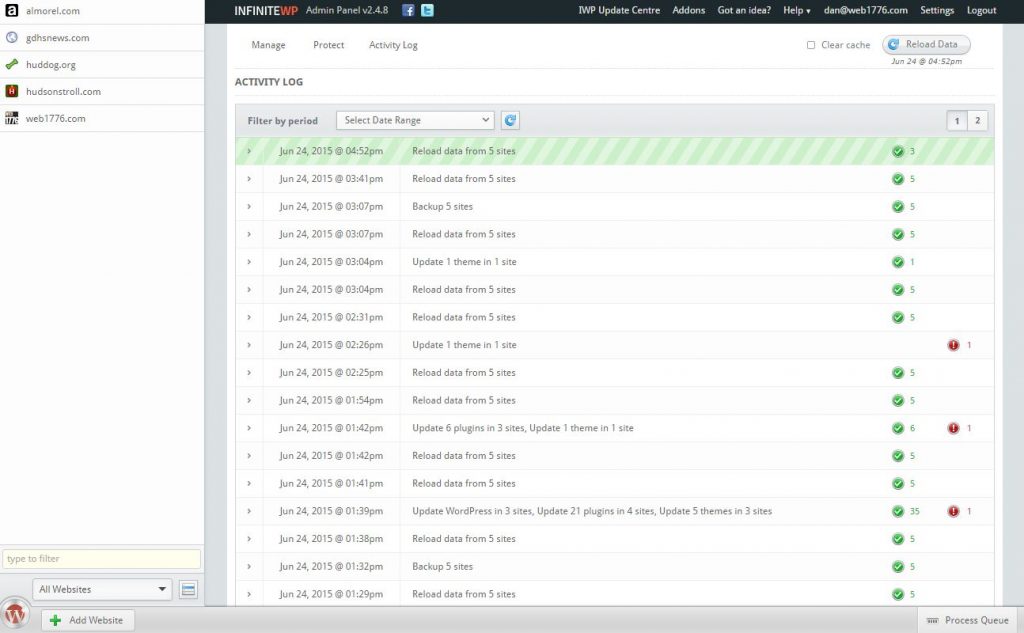Overview
Since WordPress 3.7, security updates to WordPress are downloaded and applied automatically. However, a WordPress site still needs regular maintenance to fully ensure stability and security. Below you’ll find Web1776’s general recommendations for keeping a WordPress site working smoothly.
Schedule
How frequently one needs to maintain a site will be influenced by a number of factors:
- Size and popularity of the site – A site that gets thousands of visitors, generates lots of user data, etc. needs more frequent attention than a simple brochure site
- Number of plugins – Some sites have few (or none), some have dozens
- Sensitive Data – From a data security standpoint, your “My Favorite Cat Videos” site probably doesn’t need to update as quickly and frequently as a site with an e-commerce component
With that in mind, the WordPress Site Maintenance document on the official WordPress Codex recommends that you “check in with WordPress for updates and upgrades at least every three months, six months at the most.”
Consider creating a recurring event in your calendar software of choice to remind your web team to perform site maintenance.
The codex document gets into some maintenance tasks that might not apply to everyone. For example: clearing comment spam, checking for dead links, and updating advertising. The two most important tasks that will apply to any site are making a backup and updating.
Backup
The majority of the sites we build come with the BackupBuddy plugin already installed. This plugin allows a WordPress admin to create a complete backup of the site with just a few clicks. This backup includes all site files, WordPress, uploads, plugins, everything. It also includes a full dump of the MySQL database, which will include your post and page data, users, plugin configurations, etc. Basically, everything you need to fully restore your site if something goes wrong.
Our recommendation is to make a full backup of your site before updating anything. Although uncommon in our experience, it is possible that an update could break your site or worse: lose your data. BackupBuddy even does a great job at “nagging” you from any of the areas in the Dashboard where you’re able to perform an update. Don’t ignore it.
Update
WordPress makes updates really simple in recent versions. Simply navigate to the “Updates” page (Dashboard → Updates) to get an overview of what components of your site need updating.
Generally, you’ll want to perform updates in this order:
- WordPress
- Plugins
- Themes (generally not applicable, since you’re probably using a custom theme)
Managing Many Sites
If you’ve got a large number of sites to maintain, consider tools like InfiniteWP that allow you to manage all your sites from a single dashboard:
InfiniteWP allow you to create backups, apply updates, and more to all the sites you manage with a few clicks.
Summary
Keeping your WordPress site updated and backed up will save you from sleepless nights and the unlikely event that something goes wrong. Create a schedule that works for you and stick to it. Restoring a site from a recent backup might only take an hour or so. Starting from scratch or cleaning up a hacked site can take much longer.



